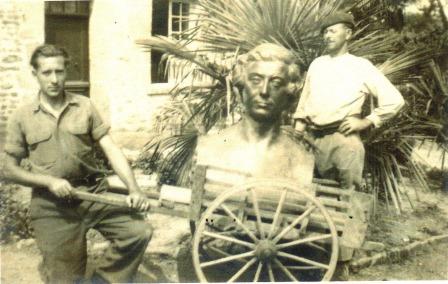The Germans’ “gluttony” for bronze explains the picturesque tribulations of the bust of Alexis de Tocqueville during World War II. Here’s the story.
One evening in 1943, Viscount René Clerel de Tocqueville took the bust of Alexis de Tocqueville to the hamlet of Ozeville where Hyacinthe Anfray, a gardener at the Tocqueville Castle, agreed to shelter it.
First of all, the shelter is the head of the bed of Hyacinthe’s daughter. But the Germans plan to commandeer a room from the Anfray family to set up an infirmary. Fright! The bust is moved into the outbuildings, 30 yards from the house. Alexis is hidden upstairs in fern.
The family tranquillity was troubled a few months later, at the end of the 1943/44 winter : the Germans, putting in position a field artillery battery near Ozeville, decided to use the outbuildings, Alexis’ shelter, as a telephone exchange. Thus, for months, they watched over the bust of the illustrious Cotentinais.
But that’s not the end of the story. Shortly before the landing, the Germans left Ozeville. Fearing that their departure would be only momentary, Hyacinthe Anfray and his son Bernard transported Alexis to the vegetable garden and buried him. To erase all traces, they sow beans on his head!
The bust did not regain its freedom until after the capture of Cherbourg. He returned to Tocqueville Castle, then was installed near to the church.
Text from “La Presse de la Manche”, June 15 1994.
Photo : courtesy of the Anfray family

